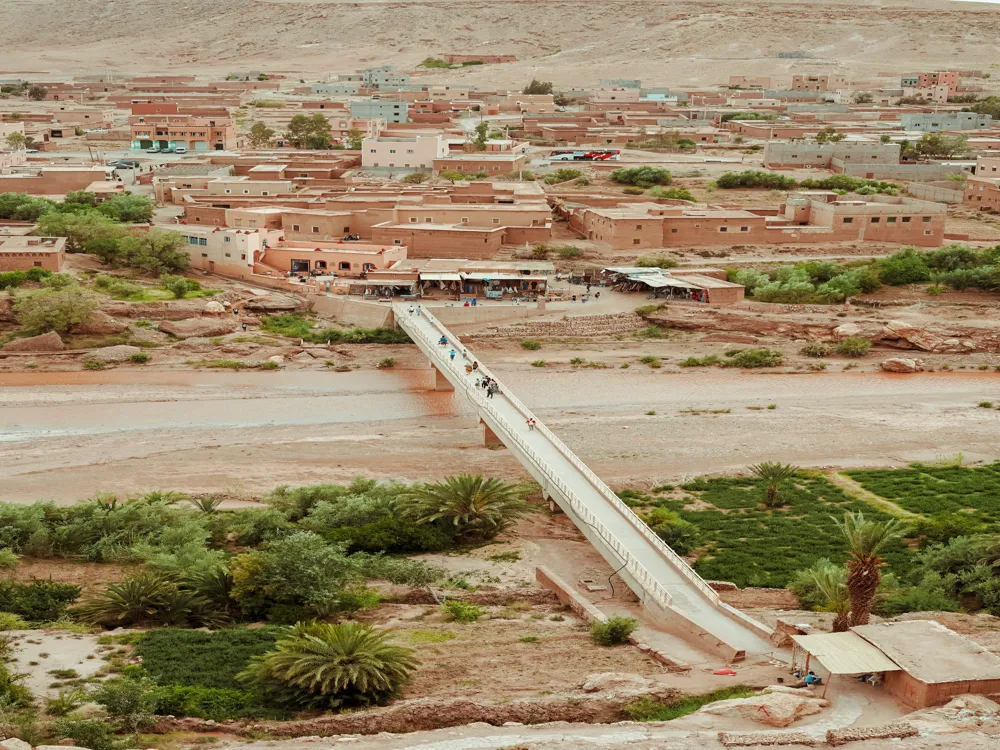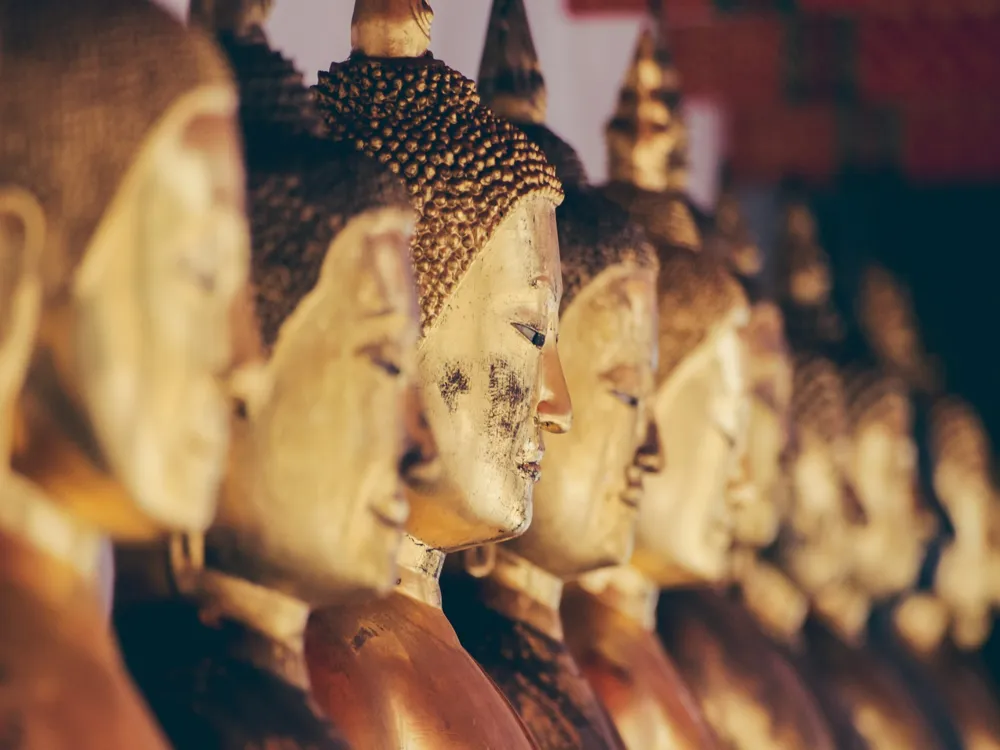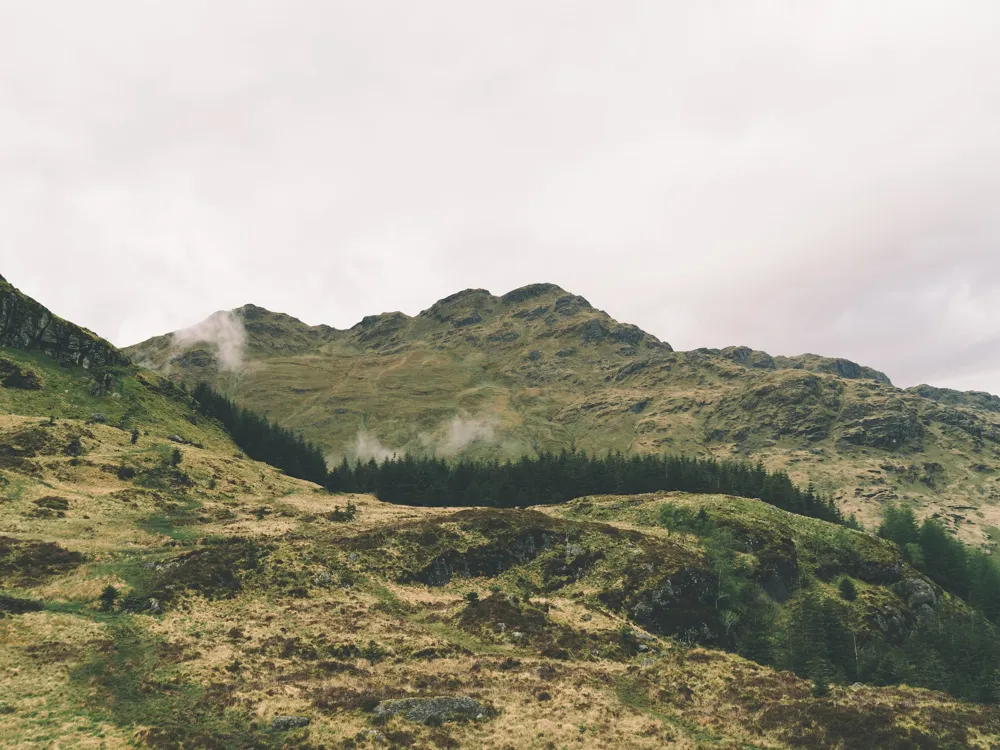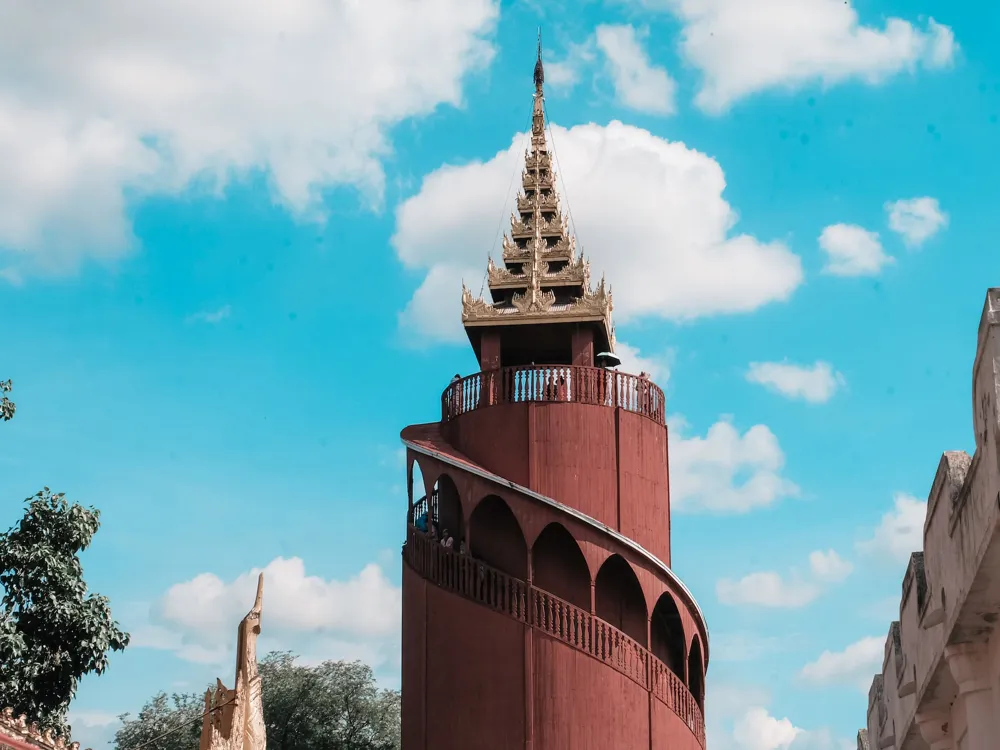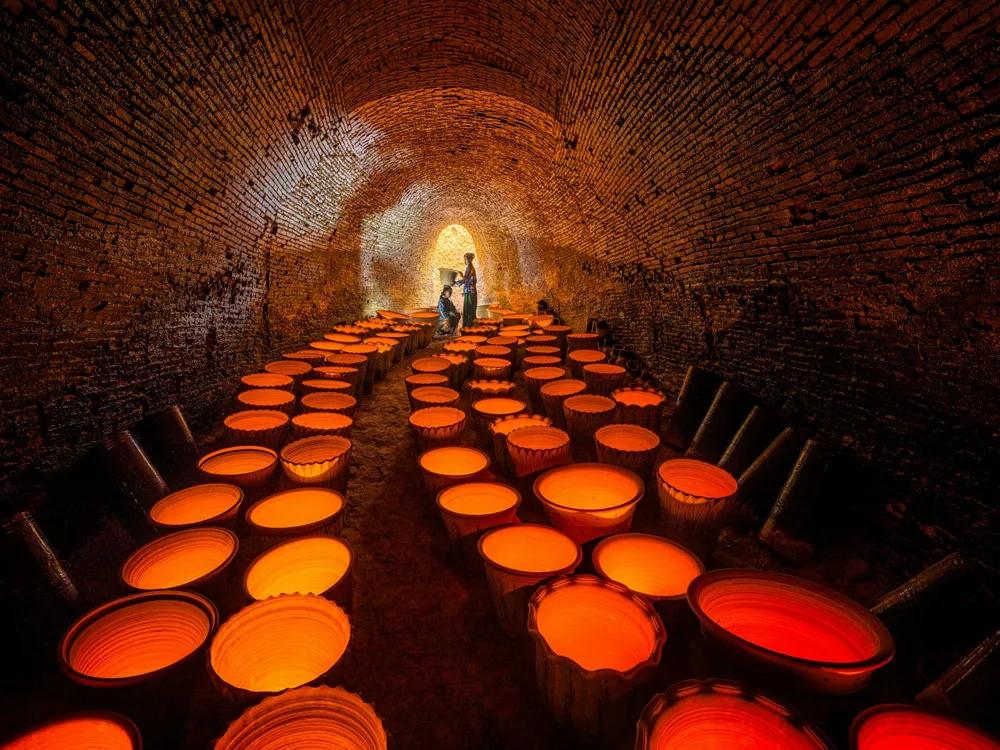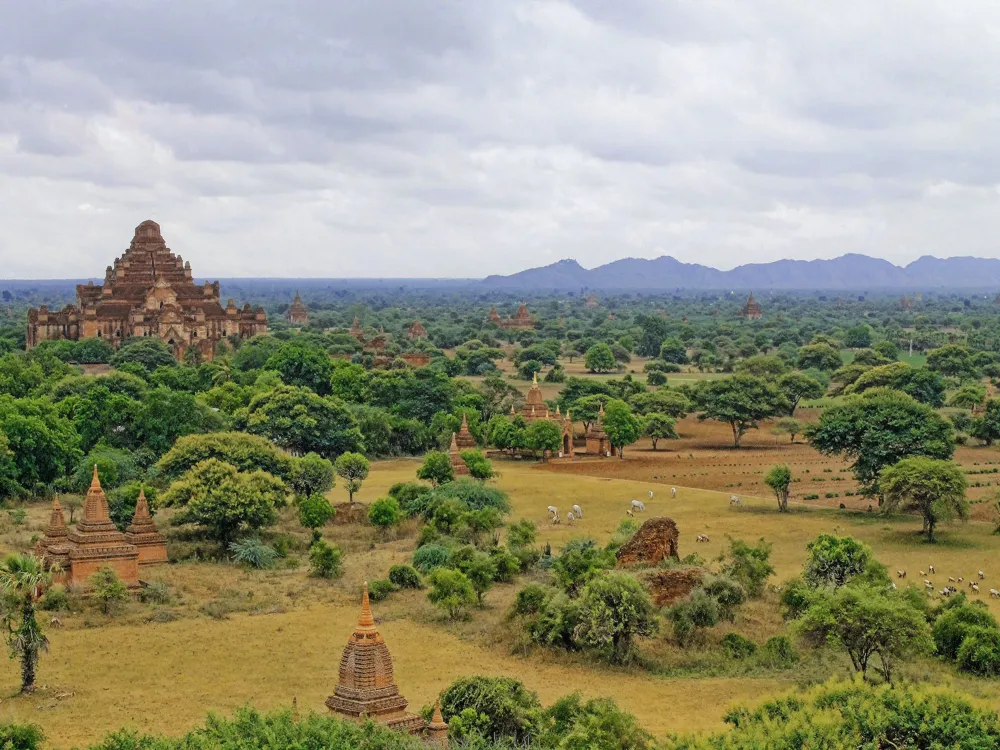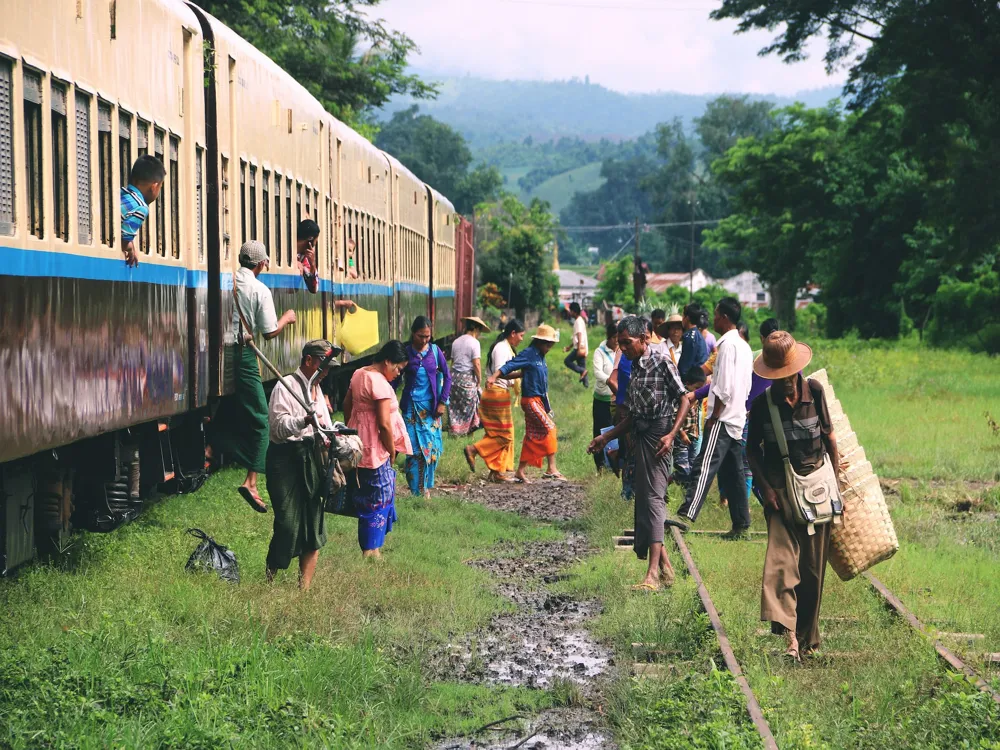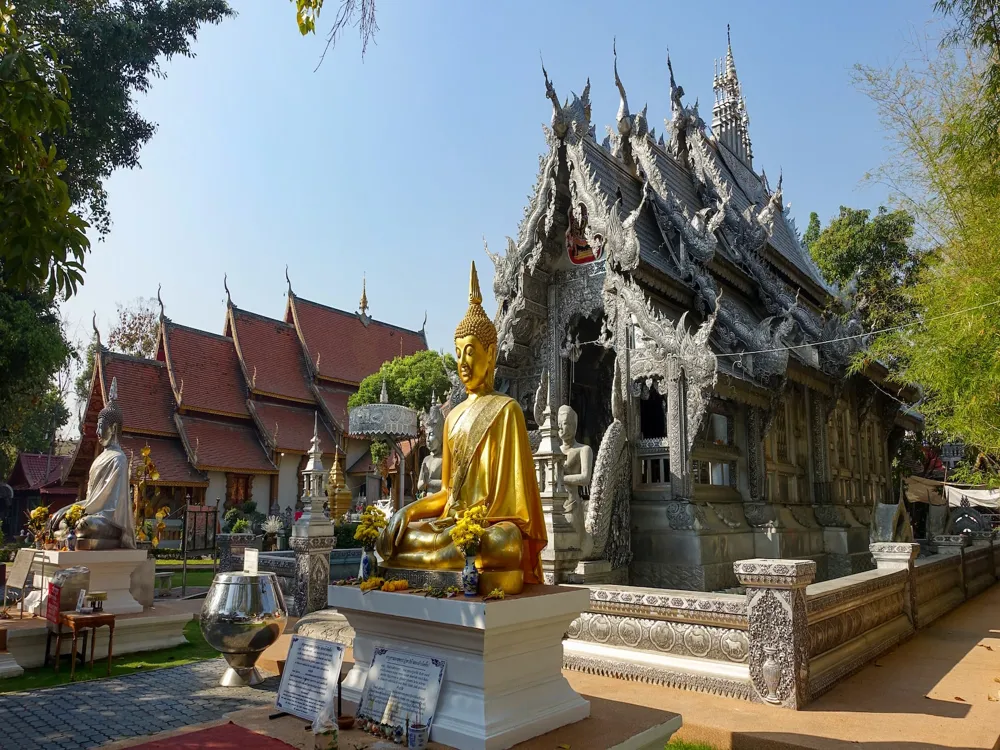Pho Win Hill, located near Monywa in Myanmar, is a remarkable cultural and historical site that captivates visitors with its unique charm. This magnificent hill is named after a famous hermit, U Pok Auk, also known as Pho Win. The hill's landscape is dotted with a fascinating array of caves, filled with ancient Buddhist statues, murals, and pagodas, making it a significant archaeological site and a testament to the rich history of Myanmar. The area is steeped in legends and folklore, which add to its mystical aura. Visitors are often mesmerized by the serene atmosphere and the artistic beauty that lies within these caverns. Pho Win Hill's history dates back to the 14th century, a time when Buddhism was flourishing in Myanmar. The caves were carved into the sandstone hill and served as a sanctuary for Buddhist monks. Over the centuries, these caves were adorned with intricate carvings, sculptures, and paintings that depict various aspects of the Buddha's life and teachings. The artistry found here is a blend of Bagan and Inwa styles, which were prevalent during different historical periods in Myanmar. This blend of styles is a testament to the enduring nature of Buddhist art in the region. The architecture of Pho Win Hill is a fascinating subject, offering insights into the religious and cultural history of Myanmar. The hill's numerous caves, some of which are interconnected, showcase a variety of artistic expressions and structural designs that reflect the evolution of Buddhist art and architecture over several centuries. The most striking feature of these caves is the intricate murals and frescoes that adorn their walls. These paintings, some of which are well-preserved, depict scenes from the Jataka tales, the past lives of the Buddha, and various aspects of Buddhist mythology. The statues and sculptures found within these caves are equally remarkable. Ranging from small figurines to life-size statues, these representations of the Buddha and various Bodhisattvas showcase the skill and devotion of the artists who created them. The use of sandstone in the construction of these caves adds a unique texture and warmth to the sculptures, making them stand out against the cool, dark interiors. The architectural layout of the caves, with their narrow passages leading to larger chambers, creates a sense of mystery and exploration for visitors. Pho Win Hill is best visited during the cooler months from November to February. The weather is more pleasant during this period, making it ideal for exploring the caves and the surrounding areas. As a site of religious significance, it is important to dress modestly when visiting Pho Win Hill. Visitors should wear clothing that covers the shoulders and knees. It's also important to remove shoes before entering the sacred areas. Consider hiring a local guide to enhance your experience. Guides can provide valuable insights into the history and significance of the artworks and the site itself. While photography is allowed in most areas, be mindful of signs indicating restrictions. Always be respectful and avoid using flash photography near the ancient murals. The region can get quite hot, so ensure you carry water with you. Also, be cautious while navigating the caves as some areas might have uneven terrain. Pho Win Hill is accessible from Monywa, a city in the Sagaing Region of Myanmar. The most convenient way to reach Monywa is by bus or car from Mandalay, which is approximately a 3-hour drive. From Monywa, Pho Win Hill is a short drive away, and visitors can hire a taxi or take a local bus to reach the site. For international travelers, the nearest airport is in Mandalay, from where you can continue your journey to Monywa by road. Exploring the region's rural landscape during the journey adds an element of adventure and cultural immersion to the trip. Read More:Overview of Pho Win Hill
Architecture of Pho Win Hill
Tips When Visiting Pho Win Hill
Best Time to Visit
Dress Code and Etiquette
Guided Tours
Photography Restrictions
Staying Hydrated and Safe
How To Reach Pho Win Hill
Pho Win Hill
Monywa
NaN onwards
View monywa Packages
Weather :
Tags : Cave
Opening hours : 8:00 AM - 5:00 PM
Ticket details : MMK 5000 for foreign tourists.
Planning a Trip? Ask Your Question
Monywa Travel Packages
View All Packages For Monywa
Top Hotel Collections for Monywa

Private Pool

Luxury Hotels

5-Star Hotels

Pet Friendly
Top Hotels Near Monywa
Other Top Ranking Places In Monywa
View All Places To Visit In monywa
View monywa Packages
Weather :
Tags : Cave
Opening hours : 8:00 AM - 5:00 PM
Ticket details : MMK 5000 for foreign tourists.
Planning a Trip? Ask Your Question
Monywa Travel Packages
View All Packages For Monywa
Top Hotel Collections for Monywa

Private Pool

Luxury Hotels

5-Star Hotels

Pet Friendly









